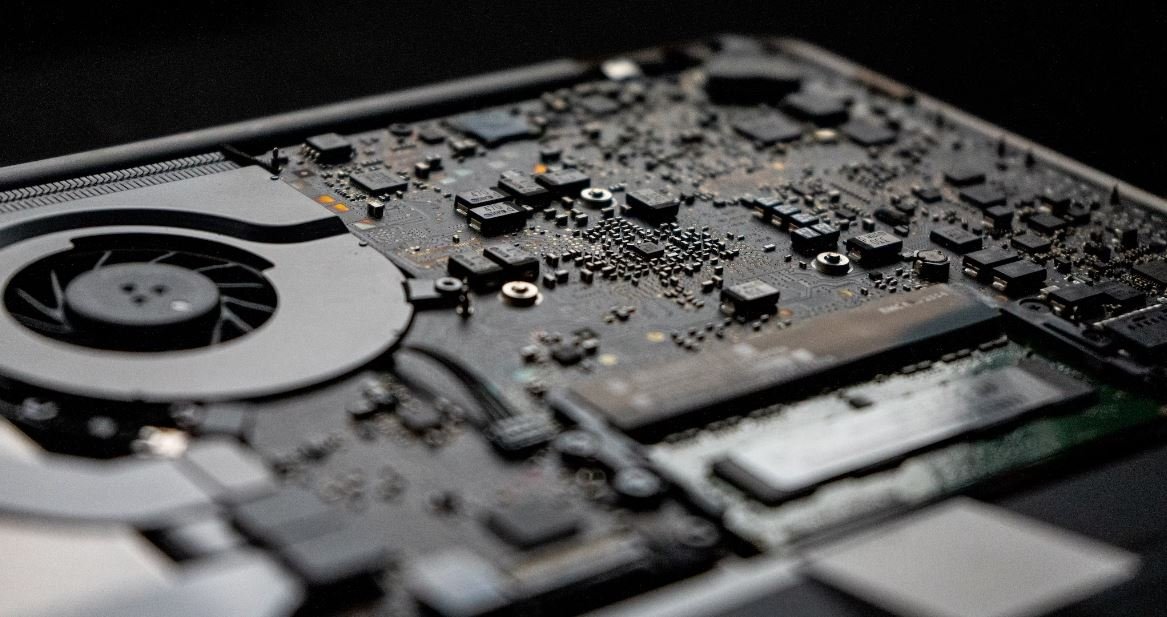GPT vs Dynamic Disk
When it comes to managing disk storage on your computer, you may come across two different terms: GPT (GUID Partition Table) and Dynamic Disk. These are two disk partitioning technologies that serve different purposes and offer distinct advantages. In this article, we will explore the differences between GPT and Dynamic Disk, their features, and which one might be better suited for your needs.
Key Takeaways:
- GPT and Dynamic Disk are two disk partitioning technologies with different features.
- GPT supports larger disk sizes and allows for more partitions, while Dynamic Disk offers advanced features like spanned volumes and fault tolerance.
- GPT is recommended for new installations and when working with large drives, while Dynamic Disk is ideal for dynamic volumes and fault-tolerant configurations.
**GPT (GUID Partition Table)** is a disk partitioning scheme that provides more functionality and flexibility compared to the traditional MBR (Master Boot Record) partitioning scheme. It supports larger disk sizes, allowing for partitions larger than 2TB, and it can accommodate up to 128 primary partitions. *With GPT, you can fully utilize the larger capacities of modern drives and create more partitions for improved organization and management.*
**Dynamic Disk**, on the other hand, is a Logical Disk Manager (LDM) technology introduced by Microsoft. It offers advanced features not available with basic disks, including dynamic volumes, fault tolerance, and software-based RAID functionality. *Dynamic Disk allows you to create spanned volumes that combine multiple disks into a single logical volume, providing increased storage capacity.*
GPT vs Dynamic Disk
Now let’s compare GPT and Dynamic Disk in more detail:
| Feature | Description |
|---|---|
| Partitioning Scheme | GUID Partition Table |
| Disk Size | Supports larger disk sizes, up to 9.4 zettabytes |
| Partitions | Allows up to 128 primary partitions |
| Feature | Description |
|---|---|
| Partitioning Scheme | Logical Disk Manager (LDM) |
| Disk Size | Supports standard disk sizes up to 18.7 million terabytes |
| Dynamic Volumes | Allows creation of spanned volumes and striped volumes |
While GPT has its advantages in terms of disk size and partitioning flexibility, Dynamic Disk offers additional features that make it suitable for specific scenarios. Here are some typical use cases for each:
- GPT is recommended for new installations on systems with UEFI firmware (Unified Extensible Firmware Interface). It is also ideal for working with large drives above 2TB. With GPT, you can fully utilize the capacity of these large drives and create multiple partitions to suit your needs.
- Dynamic Disk is useful when you require dynamic volumes with advanced features like spanned volumes, striped volumes, and mirrored volumes. These dynamic volumes allow for combining multiple disks into a single logical volume, thereby providing scalability and increased storage capacity.
- If you need fault tolerance and redundancy in your disk configuration, Dynamic Disk is the way to go. It supports RAID-5 and RAID-1 mirroring, allowing you to protect your data against drive failures and maintain the availability of your system.
**In conclusion**, choosing between GPT and Dynamic Disk depends on your specific needs and the requirements of your system. If you are working with large drives or require advanced features like fault tolerance and dynamic volumes, Dynamic Disk is the better choice. However, for new installations on UEFI systems, or when you need to fully utilize large drive capacities, GPT is the recommended partitioning scheme.

Common Misconceptions
Misconception 1: GPT and Dynamic Disk are the same thing
One common misconception among users is that GPT (GUID Partition Table) and Dynamic Disk are interchangeable terms for the same thing. However, this is not true. GPT refers to the partitioning scheme used for managing disk partitions, while Dynamic Disk refers to a disk storage technology used in Windows operating systems. These two terms refer to different aspects of disk management.
- GPT is a partitioning scheme.
- Dynamic Disk is a disk storage technology.
- GPT and Dynamic Disk serve different purposes.
Misconception 2: GPT and Dynamic Disk are compatible with any operating system
Another common misconception is that GPT and Dynamic Disk are compatible with any operating system. While GPT is supported by most modern operating systems, including Windows, macOS, and Linux, Dynamic Disk is a proprietary technology from Microsoft and is only fully supported by Windows. If you plan to use Dynamic Disk, it is important to consider the operating system’s compatibility.
- GPT is supported by Windows, macOS, and Linux.
- Dynamic Disk is only fully supported by Windows.
- Consider operating system compatibility when choosing between GPT and Dynamic Disk.
Misconception 3: Dynamic Disk is necessary for advanced disk management
There is a misconception that Dynamic Disk is a requirement for advanced disk management tasks. While Dynamic Disk offers some additional features such as spanned volumes, striped volumes, and fault tolerance options, most users can achieve advanced disk management tasks using GPT partitioning alone. GPT supports features like larger disk sizes, more partitions, and better data recovery options.
- Advanced disk management is possible with GPT alone.
- GPT supports larger disk sizes and more partitions.
- Dynamic Disk offers additional features, but GPT is sufficient for most users.
Misconception 4: Converting a disk from GPT to Dynamic Disk or vice versa is a simple task
Many users believe that converting a disk from GPT to Dynamic Disk, or vice versa, is a straightforward process. However, it is important to note that converting a disk from one type to another requires you to delete all existing partitions and reformat the disk, resulting in data loss. Additionally, the process of converting a disk type can be complex and may require advanced knowledge or the use of third-party software.
- Converting disk types requires deleting all existing partitions.
- Data loss is inevitable when converting disk types.
- Converting disk types may require advanced knowledge or third-party software.
Misconception 5: GPT and Dynamic Disk have no impact on system performance
Some users mistakenly believe that choosing between GPT and Dynamic Disk has no impact on system performance. However, the disk type you choose can affect various aspects of performance, including boot time, disk access speed, and the ability to recover data from damaged disks. It is recommended to consider your specific requirements, such as system performance and data recovery needs, when selecting a disk type.
- Disk type can impact boot time and disk access speed.
- GPT offers better data recovery options than Dynamic Disk.
- Consider performance and data recovery needs when choosing a disk type.

GPT and Dynamic Disk: A Comparison
The following tables provide a comparison between GPT (GUID Partition Table) and Dynamic Disk technologies, focusing on various points and aspects that illustrate their differences and functionalities.
Header Sizes
The table below showcases the header sizes for GPT and Dynamic Disk:
| GPT | Dynamic Disk |
|---|---|
| 92 bytes | 1 KB |
Maximum Partition Count
The next table displays the maximum number of partitions supported by each technology:
| GPT | Dynamic Disk |
|---|---|
| 128 | 2,000 |
Partitioning Schemes
The following table highlights the partitioning schemes used by GPT and Dynamic Disk:
| GPT | Dynamic Disk |
|---|---|
| Maintains backup duplicates of the partitioning data for redundancy. | Supports simple, mirrored, striped, and spanned volumes. |
Compatibility
This table showcases the compatibility of GPT and Dynamic Disk:
| GPT | Dynamic Disk |
|---|---|
| Supported by modern operating systems, including Windows, Linux, and macOS. | Compatibility limited to Windows operating systems. |
Boot Support
Here, we present information about the boot support provided by GPT and Dynamic Disk:
| GPT | Dynamic Disk |
|---|---|
| Supports booting from both UEFI and BIOS systems. | Does not support booting from Dynamic Disks. |
Storage Capacity
The table below showcases the storage capacity limitations for GPT and Dynamic Disk:
| GPT | Dynamic Disk |
|---|---|
| 18.4 million TB | Max size of individual volumes depends on the file system used. |
Backup and Restoration
This table provides information on backup and restoration capabilities of GPT and Dynamic Disk:
| GPT | Dynamic Disk |
|---|---|
| Includes a backup and restoration mechanism. | Requires manual backup and restoration methods. |
Host Disk Utility Support
Here, we compare the support for host disk utility tools:
| GPT | Dynamic Disk |
|---|---|
| Supported by various disk utility tools. | Support limited to Windows Disk Management and DiskPart. |
Data Recovery
This table illustrates the data recovery options for GPT and Dynamic Disk:
| GPT | Dynamic Disk |
|---|---|
| Specialized data recovery solutions available for GPT partitions. | Data recovery possible using third-party partition recovery tools. |
Summary
In this article, we explored the differences between GPT and Dynamic Disk technologies by examining various aspects of their functionality, compatibility, storage capacity, and more. GPT, with its advanced features such as redundancy, better compatibility, and larger storage capacity, provides a more versatile solution for modern operating systems. Dynamic Disk, on the other hand, serves as a Windows-specific disk management solution that offers support for various volume types. It’s important to consider the specific requirements of your system and choose the appropriate disk partitioning technology accordingly.
Frequently Asked Questions
What is GPT and what is Dynamic Disk?
GPT stands for GUID Partition Table, which is a partitioning scheme used to define the layout of a hard disk drive. It is commonly used in modern computer systems and supports drives larger than 2TB. On the other hand, Dynamic Disk is a type of disk storage introduced by Windows operating systems, allowing users to create dynamic volumes that can span multiple disks.
What are the main differences between GPT and Dynamic Disk?
The main differences between GPT and Dynamic Disk are:
– GPT supports a larger number of partitions compared to Dynamic Disk.
– GPT offers built-in redundancy through the use of a backup partition table, whereas Dynamic Disk relies on software-based redundancy provided by Windows operating systems.
– GPT supports drives larger than 2TB, while Dynamic Disk has a limitation of 2TB for individual volumes.
– GPT is universally compatible with newer operating systems, including Windows, macOS, and Linux. Dynamic Disk is primarily limited to Windows operating systems.
Can I convert a GPT disk to a Dynamic Disk, or vice versa?
Yes, it is possible to convert a GPT disk to a Dynamic Disk, or vice versa. However, the process involves data loss, so it is crucial to back up all important data before proceeding with the conversion. Additionally, conversion between GPT and Dynamic Disk is only supported by certain operating systems, such as Windows.
Which is better for performance, GPT or Dynamic Disk?
Neither GPT nor Dynamic Disk significantly impacts disk performance. The choice between the two is more about compatibility and specific requirements rather than performance. Both partitioning schemes function well for most everyday computing tasks.
Does GPT or Dynamic Disk affect data recovery or disk repair?
GPT and Dynamic Disk have different implications when it comes to data recovery and disk repair:
– GPT employs a backup partition table, which makes data recovery and disk repair somewhat easier in the event of partition table corruption.
– Dynamic Disk relies on software-based redundancy and has its own mechanisms for data recovery and disk repair. Windows operating systems offer utilities to manage and repair dynamic volumes.
Can GPT and Dynamic Disk be used in the same system?
Yes, a system can have a combination of GPT and Dynamic Disk. However, it is important to note that GPT can only be used as the partitioning scheme for the boot drive if the system supports UEFI (Unified Extensible Firmware Interface) instead of the traditional BIOS (Basic Input/Output System).
Are there any specific advantages of using GPT over Dynamic Disk?
Yes, some advantages of using GPT over Dynamic Disk include:
– GPT supports a larger number of partitions, allowing for more flexible disk management.
– GPT is universally compatible with various operating systems, including Windows, macOS, and Linux.
– GPT supports drives larger than 2TB, making it suitable for high-capacity storage requirements.
Do all Windows versions support GPT and Dynamic Disk?
No, not all Windows versions support both GPT and Dynamic Disk. GPT is supported by 64-bit versions of Windows XP, Windows Vista, Windows 7, and later. Dynamic Disk, on the other hand, is supported by Windows 2000, Windows XP Professional, Windows Server 2003, and all subsequent Windows operating systems.
Do GPT and Dynamic Disk have any limitations?
While GPT and Dynamic Disk offer various advantages, they do have certain limitations:
– GPT may not be compatible with older operating systems that use BIOS instead of UEFI.
– Dynamic Disk is primarily limited to Windows operating systems and may not be compatible with other platforms.
– Some third-party disk management software may not fully support GPT or Dynamic Disk, leading to potential compatibility issues.
Which partitioning scheme should I choose, GPT or Dynamic Disk?
The choice between GPT and Dynamic Disk depends on factors such as system requirements, disk size, operating system compatibility, and desired features. If you need support for larger drives and better compatibility with different operating systems, GPT is a better choice. On the other hand, if you require dynamic volume management within a Windows environment and don’t need support for large drives, Dynamic Disk may be more suitable. It is always recommended to evaluate your specific needs and consult relevant documentation or experts before making a decision.




